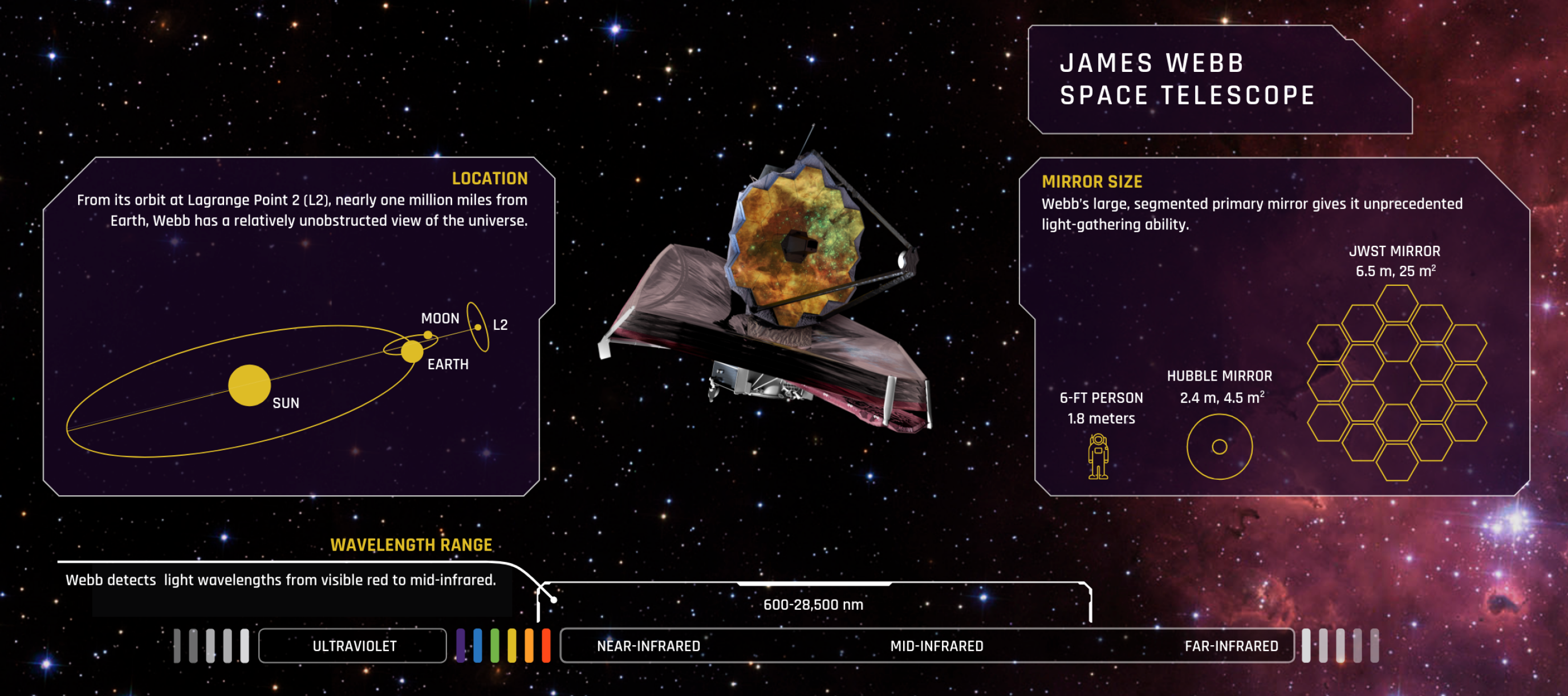1 min read
About the James Webb Space Telescope

Location: From its orbit around the Sun at Lagrange Point 2 (L2), nearly 1.5 million kilometers (1 million miles) from Earth, Webb has a relatively unobstructed view of the universe. This orbit allows the telescope to stay in line with the Earth as it moves around the Sun, assisting Webb’s large sunshield in protecting its infrared instruments from the light and heat of the Sun, Earth, and Moon.
Mirror Size: Webb’s large, segmented primary mirror gives it unprecedented light-gathering ability. Each of its 18 hexagonal-shaped mirror segments is 1.3 meters (4.3 feet) in diameter. Together they create a surface 6.6 meters (21.7 feet) across, with a collecting area of about 25 square meters. In contrast, the Hubble Space Telescope has a single, circular primary mirror that is 2.4 meters (7.8 feet) in diameter, with a collecting area of 4.5 square meters.
Wavelength Range: Webb detects light wavelengths on the electromagnetic spectrum from visible red to mid-infrared. Its four instruments provide wavelength coverage from 600 to 28,500 nanometers, or 0.6 to 28.5 microns (1 micron is one millionth of one meter). The infrared part of the spectrum spans from about 0.75 microns to a few hundred microns.
Share
Details
Laura Betz
NASA’s Goddard Space Flight Center
Greenbelt, Maryland
laura.e.betz@nasa.gov
NASA, ESA, CSA, Elizabeth Wheatley (STScI)































